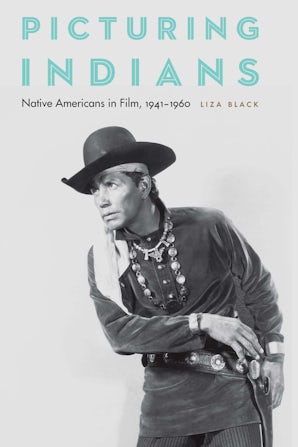“A refreshing take on an old story, one that has too often emphasized settler colonial tropes at the expense of Indigenous experiences. . . . Picturing Indians is an important and impressive contribution to a growing body of historical literature that asks us ‘to look at the movies as a site of work as well as art.’ . . . More importantly, [Black] demands that we reckon with the physical presence of Native people in the movie industry, where they exercised their own judgment and made their own meanings for the work they performed within the constraints of the studio system.”—Andrew Fisher, American Historical Review
“A significant contribution to the growing Indigenous studies scholarship in the area of film and media studies.”—Angelica Lawson, Western Historical Quarterly
“Fresh and original. . . . Picturing Indians represents a critical contribution to the field of Native American representations in film with its study of labor history and analysis.”—Michelle Raheja, Film Quarterly
"In both method and content, this book charts a new movement in Indigenous film studies in particular and film studies in general. It is welcome, indeed."—Jennifer L. Jenkins, Southwestern Historical Quarterly
“Black’s study of the lives, labor, and organized guilds of Native American and (faux) Native American actors within the Hollywood film industry is not a recuperative gesture, but instead it is a radical intervention that turns the tables on the simple vilification of the Hollywood Indian and the settler colonialist ideology imbued within the films.”—Andre Seewood, American Indian Quarterly
"This book is necessary reading to anyone interested in studying Native American visual representation."—Steve Pelletier, American Indian Culture and Research Journal
“Meticulously researched, this engrossing volume fills a deep void in both film studies and Native American history.”—Karla Strand, Ms. Magazine
“Liza Black systematically studies Indian characters in the Hollywood films of the l940s and l950s and shows how film created a single type of Indian for Native and non-Native actors, though the latter often received higher pay. Black disables this construct, and she offers a stunning history of the experiences of Native American actors who worked in the film industry during these years.”—Lisbeth Haas, author of Saints and Citizens: Indigenous Histories of Colonial Missions and Mexican California
“Liza Black’s exhaustively researched study of American Indian actors fills a gap in scholarship on Native American performance by focusing on the most influential and damaging period for Hollywood’s representations of Native peoples. Highlighting their efforts to make a living in the film industry and negotiate its expectations, Black powerfully demonstrates Native people’s survival and agency, as well as the ways popular culture created and abetted narratives that continue to support indigenous erasure and dispossession.”—Nicolas G. Rosenthal, author of Reimagining Indian Country: Native American Migration and Identity in Twentieth-Century Los Angeles
